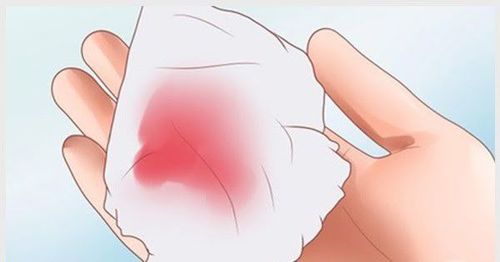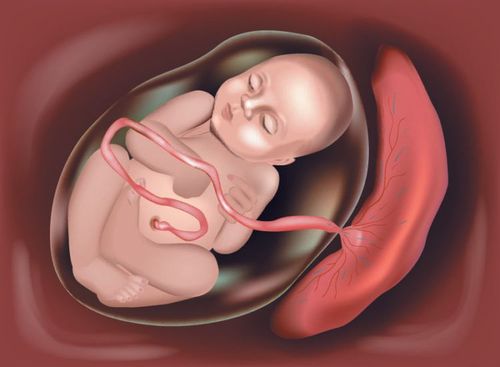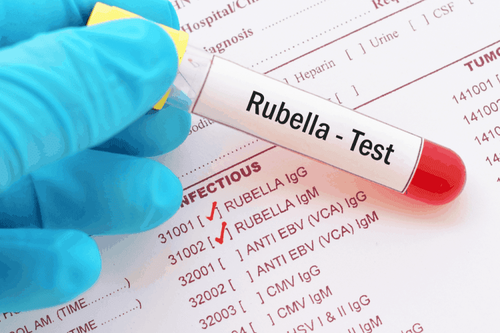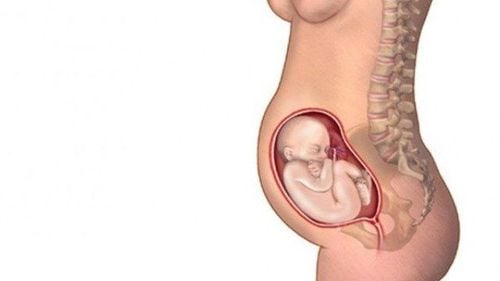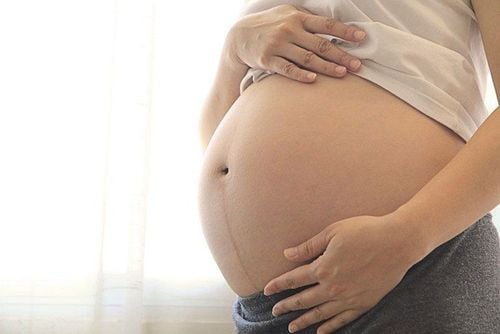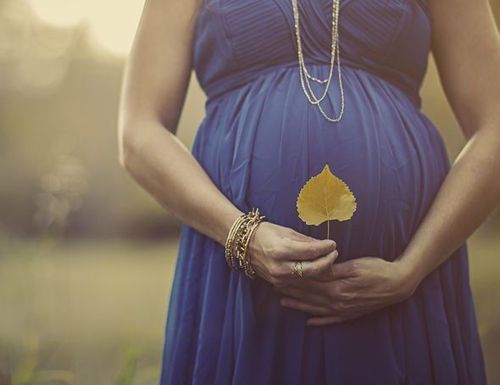This is an automatically translated article.
Placental attachment behind group 3 is a condition where the placenta attaches low on the uterine wall. Depending on each symptom, pregnancy week, and the health of the mother and baby, the doctor will prescribe and provide appropriate medical care. So what is each other behind group 3 and is it dangerous to stick behind group 3? Follow the following article to get the answer.
1. What is the group behind group 3?
The placenta develops at the same time as the baby and is attached to the lining of your uterus (womb) during pregnancy. It allows oxygen and nutrients to pass from you to your baby, as well as the production of hormones that support your pregnancy.
The fertilized ovum (egg) implants in the lining of the uterus and the placenta develops from there. As the pregnancy progresses, the baby and placenta increase in size, with which the uterus expands and affects the position of the placenta. The area where the placenta attaches usually extends upwards, moving the placenta away from the cervix. So what's behind group 3?
The way to call placenta posterior group 3 comes from the following ultrasound classification system of placental attachment:
Anterior uterine attachment:
Group I: The upper edge of the placenta attaches to the posterior 1⁄4 above; Group II: The upper edge of the placenta attaches to the anterior superior 1⁄4; Group III: The upper edge of the placenta attaches to the anterior and inferior 1/4. Placenta is attached to the back of the uterus:
Group I: The upper edge of the placenta is attached to the anterior and superior 1⁄4; Group II: The upper edge of the placenta attaches to the posterior 1⁄4; Group III: The upper edge of the placenta attaches to the posterior 1⁄4 below. So the placenta is attached to the back of group 3 is the placenta with the upper edge attached to the posterior 1/4 below the back of the uterus. The position of the placenta will be recorded when you have an ultrasound at 18-22 weeks. If the placenta is significantly low, you will have an additional ultrasound later in your pregnancy (usually around 32, 36 weeks) to recheck its position. For most women, the placenta will move to the upper part of the uterus at this stage, so you don't need to worry if you have group 3 results.
At 35 weeks onwards, cases where the placenta covers the endocervical orifice or the distance from the edge of the placenta and the endocervical foramen is less than 1cm is diagnosed as low-attachment or placenta previa and you have may require medical monitoring and appropriate birth planning counseling.
2. Causes and risk factors of placenta attached behind group 3
There is no clear reason for each other to stick low in general as well as to stick to the back of group 3 in particular. However, there are a few risk factors that have been studied for this condition, including:
Multiple pregnancy (pregnancy with more than one fetus) Pre-implantation procedures, surgery on the uterus such as cesarean section , abortion , uterine fibroid removal ,... Elderly mother (over 35 years old) Ever had a miscarriage, placenta previa Uterus has morphological abnormalities Multiple births In addition, there are other factors: smoking, cocaine use,...
3. Is it dangerous to stick together behind group 3?
3.1. For the mother For the mother, the group 3 posterior placenta can cause some dangerous conditions as follows:
Anemia: the mother can bleed heavily during pregnancy and will increase the risk pregnancy anemia. Blood loss during delivery: During labor, the muscles in the lower part of the uterus (cervix) will relax but the placenta does not relax, leading to premature detachment of the placenta from the uterus, causing blood loss for the mother. much and can lead to death. In addition, group 3 posterior placenta that is dissected after cesarean section can still cause heavy bleeding leading to infection for the mother. In case of heavy bleeding that cannot be stopped, a hysterectomy may be required. Increased risk of cesarean section: In cases where the placenta is low and completely covers the hole in the cervix, the doctor will appoint an active cesarean section to minimize possible obstetric complications. The remaining cases can be considered to wait until labor. Hemorrhagic shock: caused by a large amount of blood loss that is difficult to control. 3.2 For fetal growth retardation: Bleeding in pregnancy due to low placental adhesion causes the mother to become anemic, from which fetal growth retardation or even fetal failure. Premature birth: When a mother has excessive bleeding, doctors may recommend a cesarean section at any gestational age. Premature babies can have health problems such as respiratory failure, low birth weight... Babies can be born with lack of oxygen causing massive brain damage and death. Unfavorable fetal position: Some argue that the low attachment of the placenta will make the fetus unable to return to the natural forward position.
4. Is there any treatment for low attachment placenta?
Currently there is no specific treatment for low placenta. The mother with low placental attachment will be periodically examined and ultrasounded so that the doctor can monitor the development of the fetus, placenta, and accompanying complications to ensure a safe pregnancy.
Based on the amount of bleeding, the gestational age, the health of the fetus, the position of the placenta and the baby, the doctors will offer a treatment plan for bleeding complications caused by low placental adhesions. Specifically
4.1. No or little bleeding In this case, the doctor will usually recommend that the mother rest in bed, stand and sit only when absolutely necessary, avoid physical activity and sexual intercourse. If you notice that the bleeding does not improve or becomes heavy, you should go to the hospital as soon as possible for medical care.
4.2. Heavy bleeding In case the mother has heavy bleeding and the fetus is not yet 36 weeks old, you will be admitted to the hospital for health care and timely monitoring and management. Depending on the amount of blood lost, you may or may not need a blood transfusion. In certain cases, you may be able to take additional medications to prevent premature labor.
If the fetus has reached 36 weeks of age, to ensure the safety of both mother and baby, doctors will appoint cesarean section. If the baby is born early, the baby may need lung maturation injections to avoid the risk of respiratory failure in premature babies.
4.3. Uncontrolled bleeding This is an emergency cesarean section. Therefore, pregnant women need to pay attention to abnormal signs to go to the hospital as soon as possible, to protect the health and safety of both mother and fetus.
Hope the information in the above article has helped you answer the questions of what is behind group 3 and is it dangerous to stick to group 3? This is a relatively dangerous medical condition. Therefore, during pregnancy, the mother should pay attention, if any abnormal symptoms appear, the mother should soon go to the medical center for examination and treatment. In particular, it is important to adhere to the regular schedule of antenatal check-ups and strictly follow the instructions of the doctor.
Currently, at the International General Hospital, there is a package maternity service, when choosing a package maternity service, pregnant women will be monitored and examined periodically with leading specialists. . Doctors will monitor and detect fetal abnormalities early, this is the great strength of Vinmec, which has carried out screening to detect fetal malformations very early and performed cytology intervention. Pregnancy offers many couples the opportunity to have a healthy baby. In addition, doctors will also examine and advise on the prevention and treatment of some common diseases during pregnancy to avoid affecting the mother's health before and after birth.
Please dial HOTLINE for more information or register for an appointment HERE. Download MyVinmec app to make appointments faster and to manage your bookings easily.




